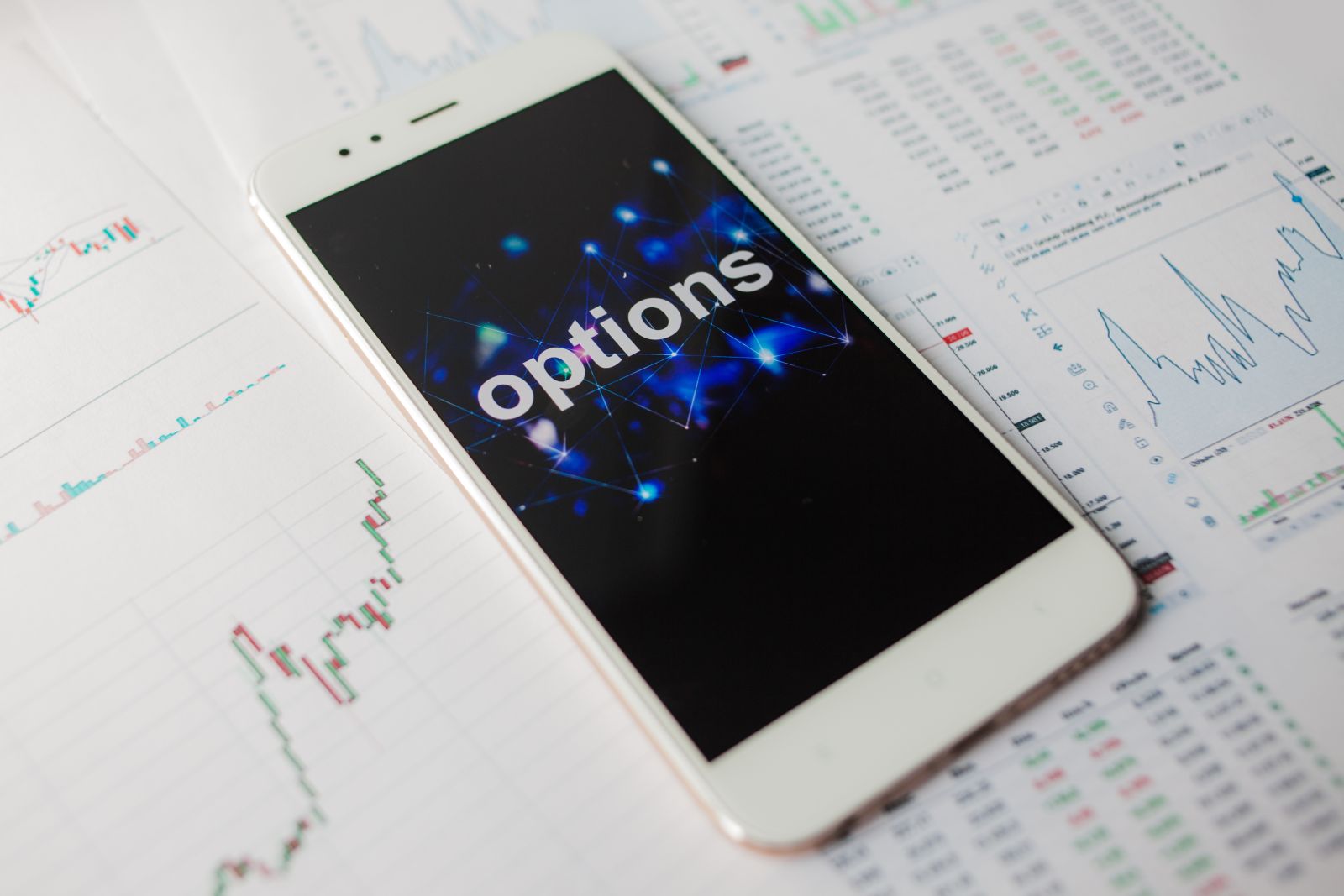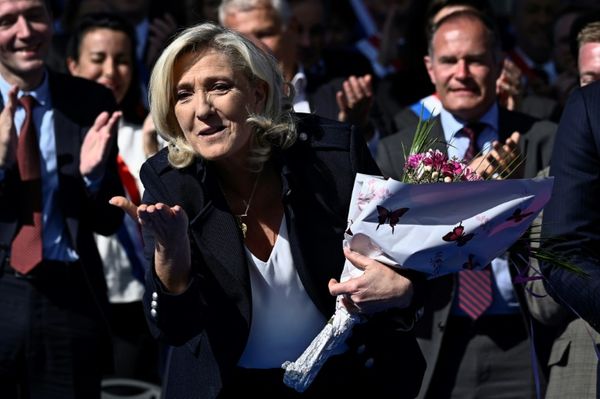
The Commerce Department reported on Thursday that the economy in the third quarter grew by 4.9%, its fastest pace in almost two years. Today, it said that prices rose by 0.4% in September, keeping the inflation rate at 3.4%.
Despite higher interest rates, consumers remain surprisingly resilient in their spending. While economists think that's not going to last, it does suggest that in the near term, payment companies like PayPal (PYPL) -- who generate most of their business in the U.S. -- might be in better shape than investors think.
In my Thursday article about unusual options activity, PayPal made my list of three names whose unusually active options expiring in April were possible moneymakers.
Regarding yesterday’s unusual options activity, PayPal had nine puts and calls with Vol/OI ratios of 1.25 or greater. Further, its options volume in October has been higher than its 30-day average of 106,860 on seven occasions, including the last two days.
I will go out on a limb and suggest that combining the latest data from the Commerce Department and PayPal’s unusually active options activity in recent days indicates that PYPL might be a contrarian play.
Here’s why I feel this way.
Have an excellent weekend!
Everything Screams ‘Don’t Do It!’
In yesterday’s piece, I commented that PYPL stock was down on Wednesday because European payments leader Worldline (WRDLY) cut its revenue guidance for 2023 from 9% at the midpoint to 6.5%.
PayPal’s stock got swept up in the bad news from Worldline despite the fact it generates just 18% of its revenue from the continent.
While it doesn’t hurt to consider the news from Europe as a foreshadowing of what’s to come in the U.S., I think the economy continues to surprise economists, and nobody knows when that will stop. It could be tomorrow; it could be two years from now.
I guess that’s why they say there is risk involved when investing. I’m being facetious, of course, but the apparent negatives surrounding PayPal stock, including the fact its shares are down 83% from its July 2021 all-time high of $310.16, screams for investors to run for the hills.
My contrarian side is drawn to the fire, knowing I might get burned. I can’t resist.
Let’s Consider the State of PayPal’s Business
The goal of any CEO, as far as I'm concerned, is to leave the business in better shape than you found it.
In December 2022, former CEO Dan Schulman told the company that he planned to retire at the end of 2023. PayPal formally announced the move in February. It began an executive search for a new CEO, culminating with the Aug. 14 announcement that it had hired Alex Chriss, Intuit’s (INTU) Executive Vice President and General Manager of Small Business and Self-Employed Group.
Chriss’ stint as CEO began on Sept. 27. Schulman will remain on the board until PayPal’s annual meeting in May.
Schulman was hired as President of PayPal in September 2014. He became CEO on July 20, 2015, when it was separated from eBay (EBAY), becoming an independent publicly traded company.
PayPal stock appreciated by 47% in the eight years he was in charge. They say timing is everything. If he’d retired in July 2021, we’d be talking about nearly 800% appreciation in six years in the top job, a compound annual growth rate of 44%.
Those are two completely different outcomes.
The Growth of the Business
In its first annual report as a public company in 2015, PayPal had a revenue of $9.25 billion and a non-GAAP operating income of $2.0 billion. In 2022, its revenue and non-GAAP operating income were $27.5 billion and $5.9 billion, respectively.
One thing you’ll notice is that its operating margin was virtually identical at 21.6% for the former and 21.5% for the latter.
I suppose you could argue that if he left it in better shape than he found it, the operating margin would be higher, but it’s hard to argue with the growth of the business over the past seven fiscal years.
So far, through the first half of 2023, it’s growing revenue (up 8% in Q2) and operating income (up 20%) at a reasonable clip. It reports Q3 results on Wednesday after the close. Revenues are expected to be $7.39 billion, 8% higher than Q3 2022, with earnings per share of $1.22, 13% higher year-over-year.
While analysts are concerned about eroding market share, they generally like it. Of the 47 covering PYPL, only one has an Underweight or Sell rating on the stock, with 31 rating it Overweight or an outright Buy, with a median target price of $84.
Bottom Line: PayPal’s current valuation is cheaper than it’s been since going public in 2015. Be greedy when others are fearful.
The Contrarian Play
As I said earlier, there were nine options yesterday with unusual options activity. All but two were put options.
I particularly like the idea of selling the Jan. 19/2024 $80 put with a bid price of $28.20. If, by some miracle, its share price climbs from the low $50s today to $80 or above in January, you get to keep the $2,820 premium income for an annualized yield of 234%.
I’ll take that every day and twice on Sundays.
Of course, the odds of this happening are slim to none. So, you’re looking at a net price paid for 100 PYPL shares of $51.80, a few pennies above where it’s currently trading.
Now, to make things interesting, I’m looking at buying the April 19/2024 $35 call with an ask price of $18.05. That’s a down payment of 51%. Your price paid should you exercise your right to buy is $53.05, a couple of dollars higher than its current share price.
So, why would this? Good question.
Let’s assume that the analyst target is bang on the money, and it hits $84 on Oct. 27, 2024. That’s 65% appreciation ($51 currently) of its share price over the next year. Let’s assume it gets 20% of the way there by Jan. 19 and another 20% by April 19.
Where does that leave the put and call?
On Jan. 19, the share price will be $61.20 and $73.44 by April 19. You’ll have to buy the 100 shares from the put at $80. Of course, your net price paid is $51.80, for a profit of $940. Meanwhile, you’d exercise the April call for a net price of $53.05, a gain of $2,039.
At this point, you’d own 200 shares of PayPal at an average cost of $52.43 and a paper gain of 40% over six months.
On the downside, let's assume it stays at $51 over the next six months. You don’t make money, and we know time is precisely that.
Just a thought.
On the date of publication, Will Ashworth did not have (either directly or indirectly) positions in any of the securities mentioned in this article. All information and data in this article is solely for informational purposes. For more information please view the Barchart Disclosure Policy here.







